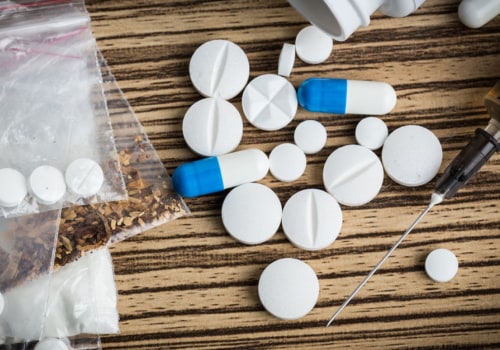According to data from the most recent national survey on drug use and health (201, 48.5 million U.S. residents aged 12 and over) reported using illicit drugs last year (about 15 percent of the population). Of these, 7.4 million (15 percent of illicit drug users) show possible signs of dependence (more than half of these 4 million to marijuana). And of these, 2.1 million (4 percent of the total) meet the criteria for “abuse”.
Drug use is common, drug addiction is rare. Approximately one in three adults will use an illegal drug in their lifetime and just under 3 million people will do so this year in England and Wales alone. Most won't suffer any long-term damage. Face-to-face interviews were conducted to diagnose drug use disorder, as well as alcohol use disorder, nicotine use disorder, and several personality disorders.
Examples of Schedule IV medications include narcotics, muscle relaxants, and commonly prescribed medications for anxiety and depression, such as alprazolam. Prevention and treatment remain insufficient in many parts of the world, and only one in seven people with drug-related disorders receive treatment each year. In short, what determines whether or not drug use becomes an addiction, and the prognosis once it has done so, has less to do with the power of the drug and more to do with the social, personal and economic circumstances of the consumer. Unfortunately, politicians and media commentators ignore the strong relationship between social distress and addiction in favor of the assumption that addiction is a random risk driven by the power of drugs.
Countless studies have investigated the prevalence of addictive behaviors in everything from work to drugs to sex. About 14 percent of people who had a drug use disorder last year and about 25 percent of people who had ever had a drug use disorder received care. The authors note that low treatment rates for drug use disorder may reflect skepticism about treatment effectiveness, as well as lack of resources, lack of knowledge among health care providers, and barriers related to stigma. But it's also true that the stigma against drugs itself prevents people from accessing safer forms of substances or safer modes of ingestion, and is therefore directly responsible for many of those deaths.
Taken together, these factors make it more likely that, instead of carefully calibrating their drug use to minimize risk, they are prepared to use the most dangerous drugs in the most dangerous ways. Most Schedule IV drugs are prescription drugs, some of which have been banned by the Food and Drug Administration. In other words, the likelihood that a consumer will overdose or develop health problems does not influence their classification as a Schedule I to V drug.






